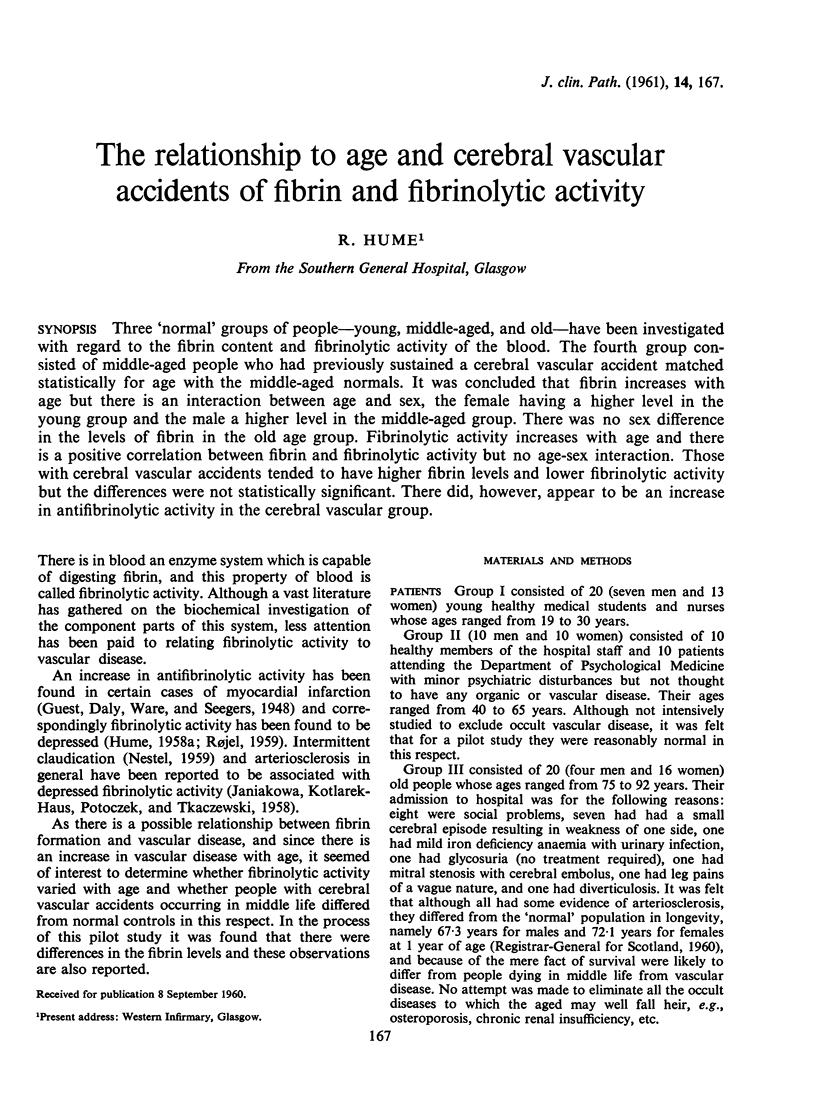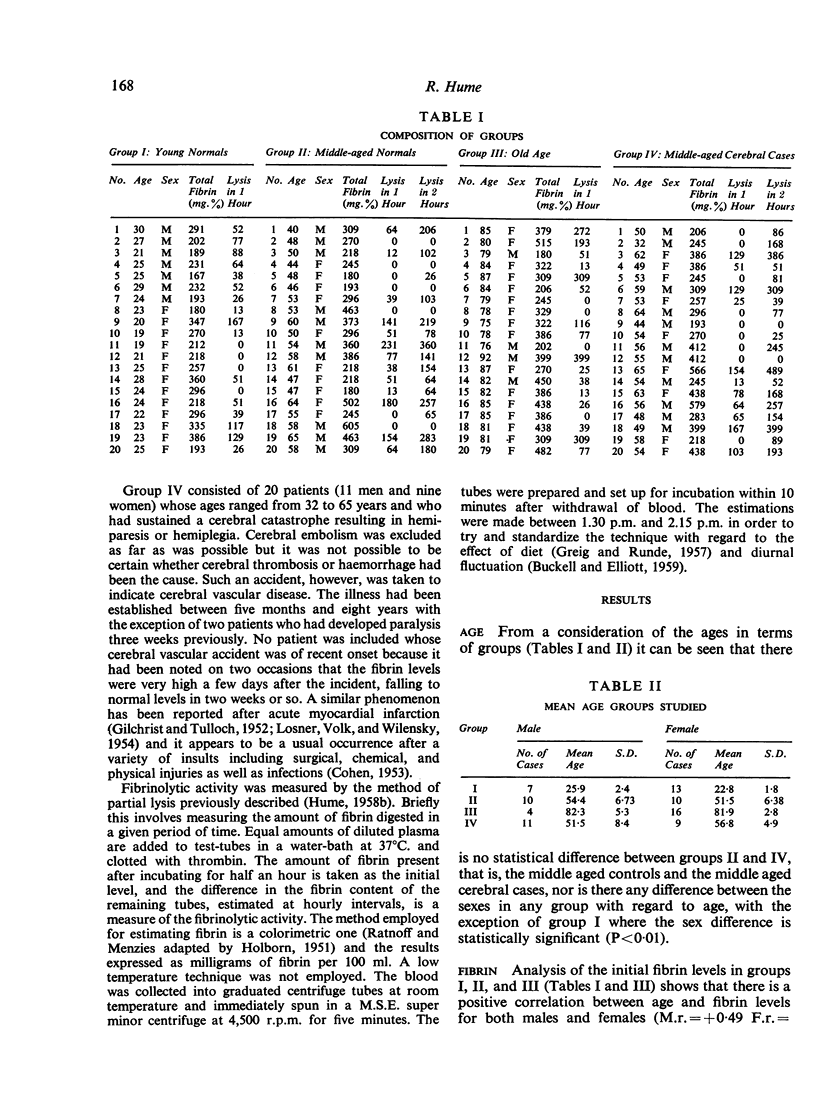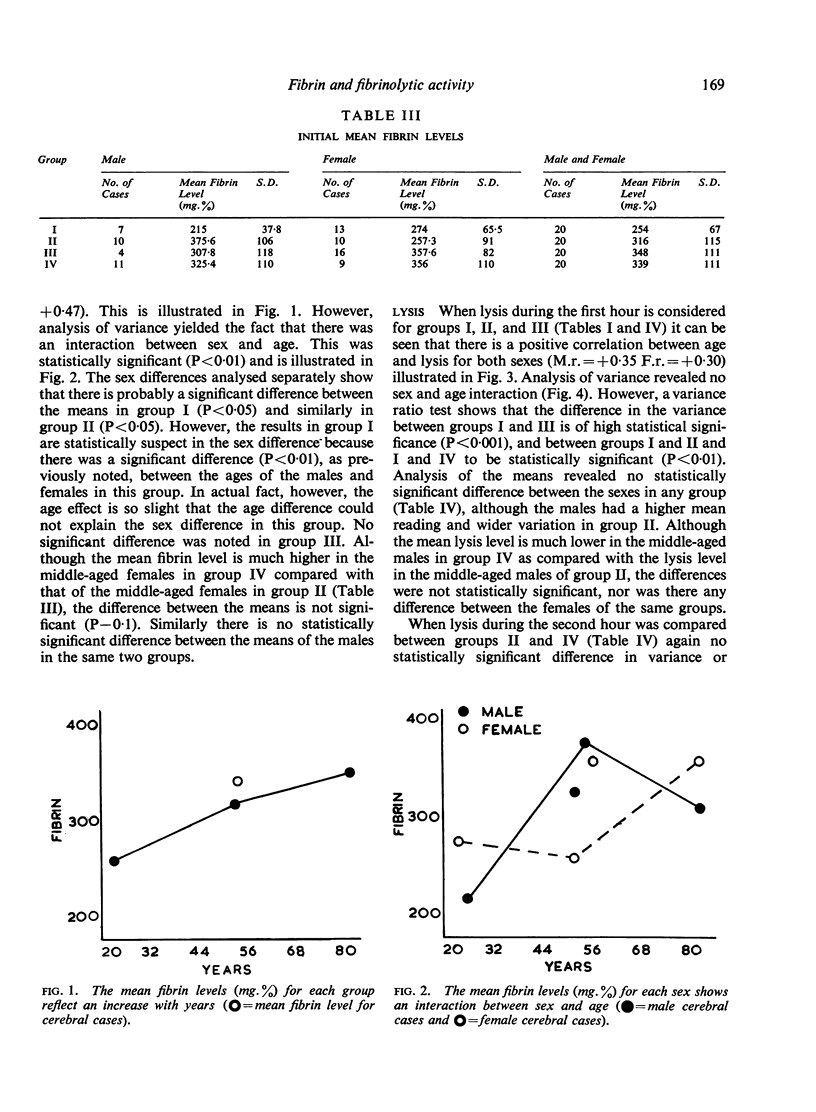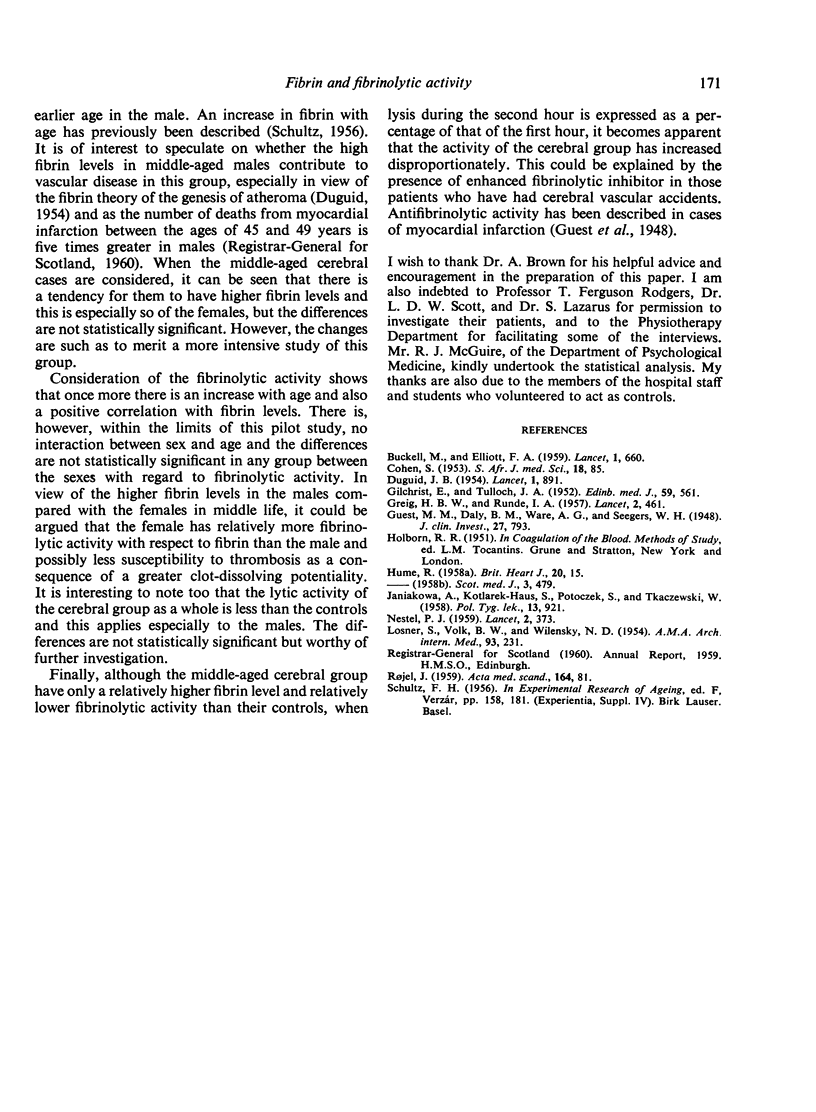Abstract
Three `normal' groups of people—young, middle-aged, and old—have been investigated with regard to the fibrin content and fibrinolytic activity of the blood. The fourth group consisted of middle-aged people who had previously sustained a cerebral vascular accident matched statistically for age with the middle-aged normals. It was concluded that fibrin increases with age but there is an interaction between age and sex, the female having a higher level in the young group and the male a higher level in the middle-aged group. There was no sex difference in the levels of fibrin in the old age group. Fibrinolytic activity increases with age and there is a positive correlation between fibrin and fibrinolytic activity but no age-sex interaction. Those with cerebral vascular accidents tended to have higher fibrin levels and lower fibrinolytic activity but the differences were not statistically significant. There did, however, appear to be an increase in antifibrinolytic activity in the cerebral vascular group.
Full text
PDF




Selected References
These references are in PubMed. This may not be the complete list of references from this article.
- BUCKELL M., ELLIOTT F. A. Diurnal fluctuation of plasma-fibrinolytic activity in normal males. Lancet. 1959 Mar 28;1(7074):660–662. doi: 10.1016/s0140-6736(59)92404-3. [DOI] [PubMed] [Google Scholar]
- COHEN S. Role of the hypophysis in the plasma fibrinogen response to trauma. S Afr J Med Sci. 1953 Sep;18(2):85–85. [PubMed] [Google Scholar]
- DUGUID J. B. Diet and coronary disease. Lancet. 1954 May 1;266(6818):891–895. doi: 10.1016/s0140-6736(54)91521-4. [DOI] [PubMed] [Google Scholar]
- GILCHRIST E., TULLOCH J. A. Observations on the plasma fibrinogen content after myocardial infarction. Edinb Med J. 1952 Nov;59(11):561–567. [PMC free article] [PubMed] [Google Scholar]
- GREIG H. B., RUNDE I. A. Studies on the inhibition of fibrinolysis by lipids. Lancet. 1957 Sep 7;273(6993):461–464. doi: 10.1016/s0140-6736(57)90769-9. [DOI] [PubMed] [Google Scholar]
- Guest M. M., Daly B. M., Ware A. G., Seegers W. H. A STUDY OF THE ANTIFIBRINOLYSIN ACTIVITY IN HUMAN PLASMAS DURING PATHOLOGICAL STATES. J Clin Invest. 1948 Nov;27(6):793–794. doi: 10.1172/JCI102030. [DOI] [PMC free article] [PubMed] [Google Scholar]
- HUME R. Fibrinolysis in myocardial infarction. Br Heart J. 1958 Jan;20(1):15–20. doi: 10.1136/hrt.20.1.15. [DOI] [PMC free article] [PubMed] [Google Scholar]
- JANIAKOWA A., KOTLAREK-HAUS S., POTOCZEK S., TKACZEWSKI W. Badania nad przyrostem azotu nieblałkowego w czasie krzepniecia i fibrynolizy w miazdzycy. Pol Tyg Lek (Wars) 1958 Jun 16;13(24):921–923. [PubMed] [Google Scholar]
- LOSNER S., VOLK B. W., WILENSKY N. D. Fibrinogen concentration in acute myocardial infarction; comparison of the clot density determination of fibrinogen with the erythrocyte sedimentation rate. AMA Arch Intern Med. 1954 Feb;93(2):231–245. doi: 10.1001/archinte.1954.00240260067006. [DOI] [PubMed] [Google Scholar]
- NESTEL P. J. Fibrinolytic activity of the blood in intermittent claudication. Lancet. 1959 Sep 19;2(7099):373–374. doi: 10.1016/s0140-6736(59)91637-x. [DOI] [PubMed] [Google Scholar]
- ROJEL J. A study of the fibrinolysin activity in thrombotic diseases. Acta Med Scand. 1959 May 20;164(1):81–93. [PubMed] [Google Scholar]


